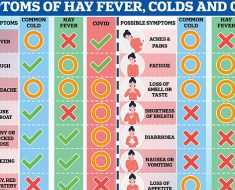At Michigan-based Radiology Imaging Solutions, a normal day starts around 7:30 a.m., when the radiologist assigned to teleradiology duties cleans up any studies that arrived after the normal workday had ended the day before.
Since the group reads for hospitals and the teleradiology service, there are always studies to be examined. This allows the radiologist on teleradiology duty to read whatever is on the worklist for teleradiology and then switch over to some of the hospital work.
The radiologist will cycle back and forth between teleradiology and hospital work every two hours. This keeps both worklists current. The radiologist assigned to the later shift will read all the studies that are on the worklist before leaving, usually by 6 p.m.
Teleradiology, the electronic transmission of radiological images such as X-rays, CT scans and MRIs, is a booming business and was one of the first big use-cases for telemedicine. There are many vendors marketing teleradiology technology and services today, including Konica Minolta, NexxRad, OnePacs, RamSoft, StatRad and TelRadSol.
"Without technology, none of this happens," said Randy Robinson, owner of Radiology Imaging Solutions, which uses Konica Minolta’s tool. "When we first started offering our services, it would take 10 minutes to send a chest study into our PACS, then another 10 minutes to send to the radiologist workstation.”
Robinson continued that it can conduct the same transaction in less than a minute.
The radiology/teleradiology system enables customization, including worklists, hanging protocols, relevant priors, report templates and report delivery options, among other things.
Radiology Imaging Solutions has doubled the number of imaging sites for which its radiologists are providing reading services.
"It is mostly a matter of ROI," Robinson explained. "Our old system required that we install expensive ‘gateway’ stations. This resulted in not only pretty significant startup costs, but also the ongoing support cost of software and hardware was suffocating. To recoup those costs, our fee per service had to be at a certain level, and the facility’s imaging volume had to be above a minimum level."
Radiology Imaging Solutions no longer needs expensive "gateways," no longer pays software support on dozens of stations, and no longer needs to support dozens of hardware platforms that constantly fail, Robinson added.
"In fact, we estimate that our teleradiology cost per study has been cut by more than 70 percent," he said. "This allows us to offer our teleradiology services to lower volume facilities at very competitive fees, which means more facilities that we can provide teleradiology services to."
And by implementing the voice recognition component of the system in place of traditional transcriptionists, productivity has increased by 400 percent, with radiologists reading two-and-a-half times the number of studies with no corresponding increase in working hours and decreasing report turnaround time by more than 50 percent.
Twitter: @SiwickiHealthIT
Email the writer: [email protected]
Source: Read Full Article





